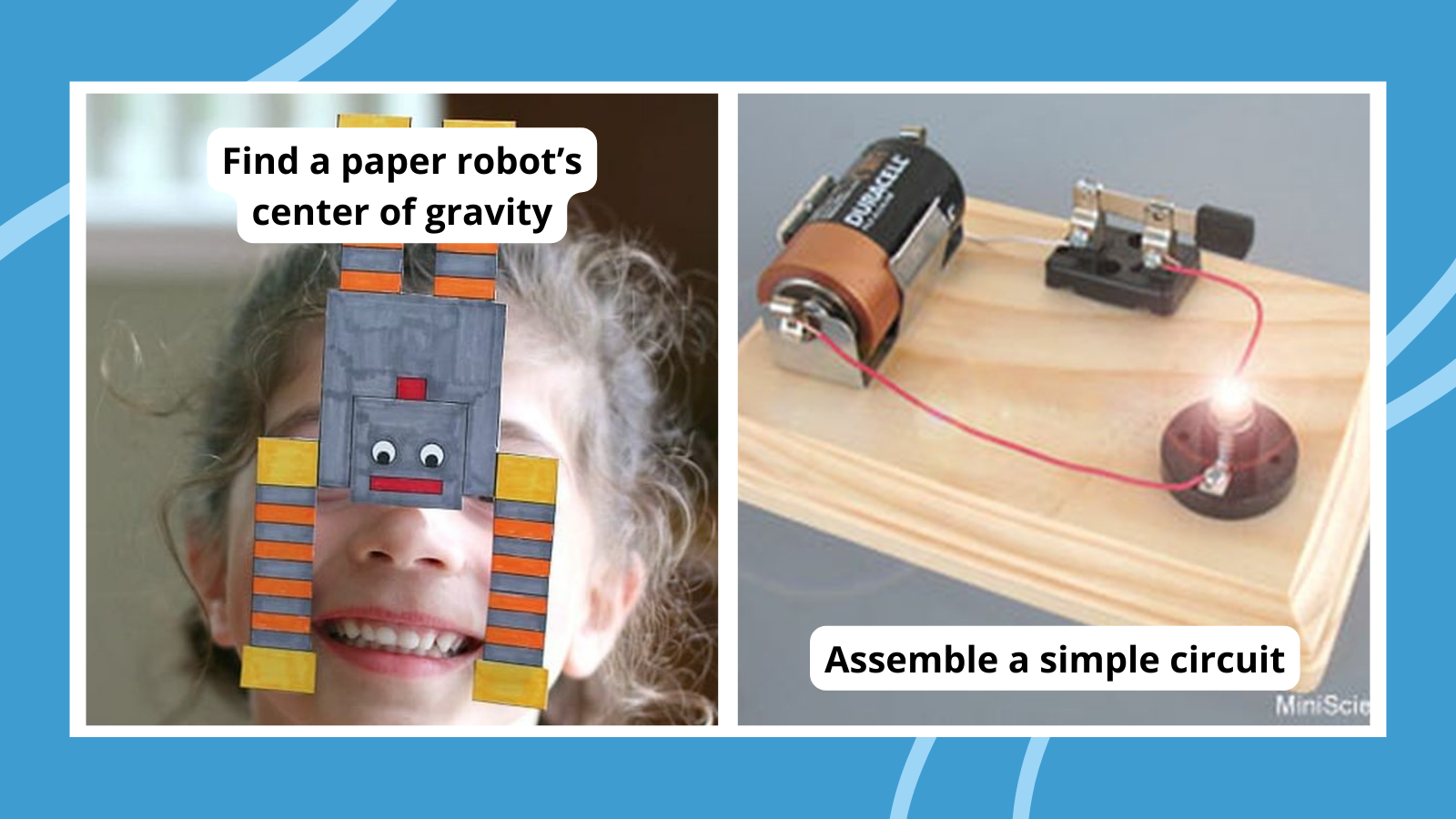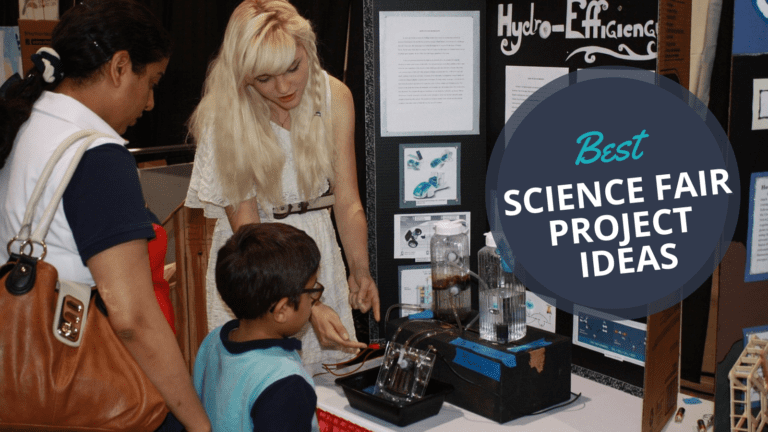Want to see your students’ eyes light up? Tell them they’re going to do an experiment! These 3rd grade science projects are easy enough for any classroom or kitchen, and they’re full of science concepts kids need to learn.
To make things even easier, we’ve rated every one of these 3rd grade science experiments based on difficulty and materials:
Difficulty:
- Easy: Low or no-prep experiments you can do pretty much any time
- Medium: These take a little more setup or a longer time to complete
- Advanced: Experiments like these take a fairly big commitment of time or effort
Materials:
- Basic: Simple items you probably already have around the house
- Medium: Items that you might not already have but are easy to get your hands on
- Advanced: These require specialized or more expensive supplies to complete
Jump to:
- 3rd Grade Science Fair Projects
- 3rd Grade STEM Challenge Projects
- Magnet and Electricity Science Experiments for 3rd Grade
- More 3rd Grade Science Projects and Activities
3rd Grade Science Fair Projects
Use these ideas to build a 3rd grade science fair project. Form your own hypothesis, alter the variables, and see what happens!
1. Discover the chemistry of slime
Difficulty: Easy / Materials: Medium
Kids adore slime, and it’s actually a terrific way to teach them about polymers. Learn the basics of slime chemistry, then experiment with the formula to make your own unique concoctions.
2. Make sun prints to display
Difficulty: Easy / Materials: Medium
You’ll need special sun-print paper for this project, but it’s inexpensive and easy to find. Kids learn about chemical reactions as they use the power of the sun to create unique works of art.
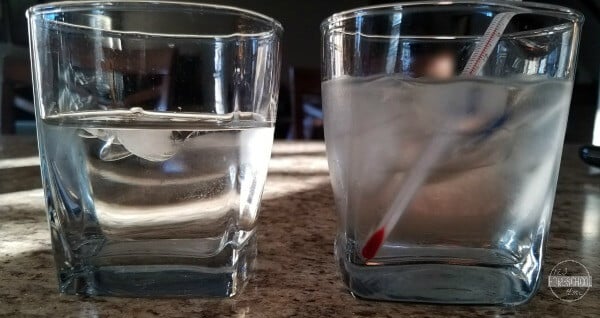
3. Experiment with ice, salt, and water temperature
Difficulty: Easy / Materials: Basic
This simple experiment requires only water, ice, salt, and a thermometer. Your 3rd grade science class can explore how ice and salt affect the temperature, a simple but effective lesson on heat transfer and freezing points.
Learn more: Ice, Salt, and Temperature Experiment

4. Learn about chromatography
Difficulty: Easy / Materials: Medium
Play around with colors, mix them together, and then use a little science magic to pull them apart again. This chromatography science project requires only simple supplies like coffee filters and markers.
Learn more: Chromatography
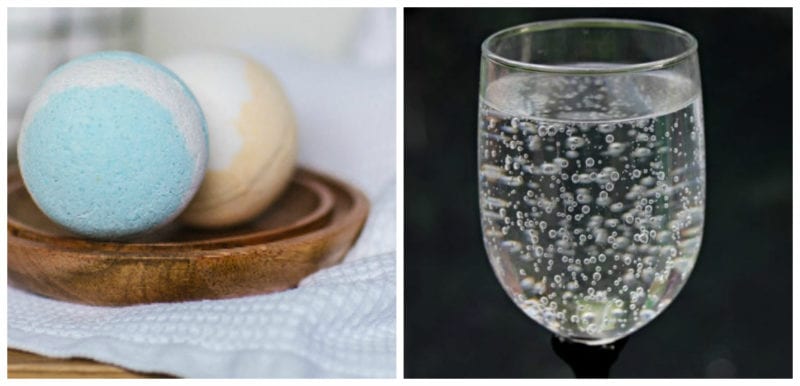
5. Understand the science behind bath bombs
Difficulty: Medium / Materials: Medium
Bath bombs certainly make bath time more fun, but what makes them work? Explore chemical reactions and get squeaky clean all at the same time!
Learn more: Bath Bomb Science Experiment
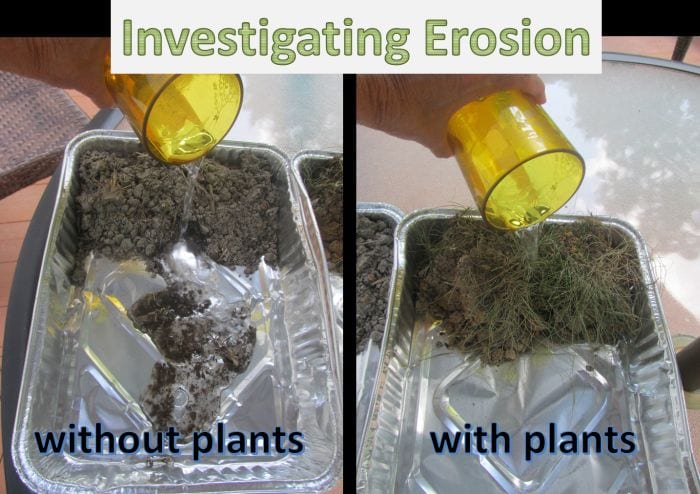
6. Investigate the effects of erosion
Difficulty: Easy / Materials: Basic
Compare the effects of “rain” on hills of bare soil vs. those covered with grass. Have your 3rd grade science students predict which they think will stand up to erosion better and then test their hypotheses.
Learn more: Erosion Experiment
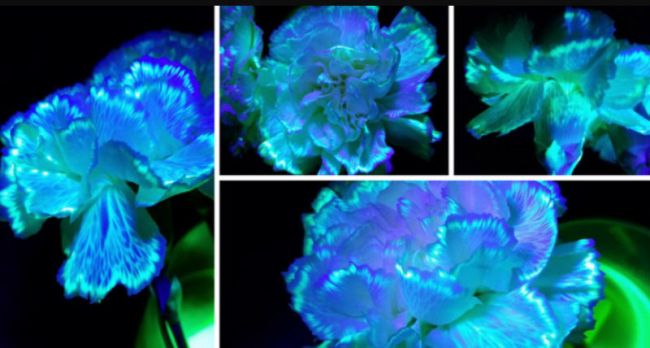
7. Give flowers a glow-up
Difficulty: Easy / Materials: Medium
This one will make kids’ eyes pop out of their heads! Use highlighters and a black-light flashlight to reveal the vascular system of flowers.
Learn more: Plant’s Vascular System
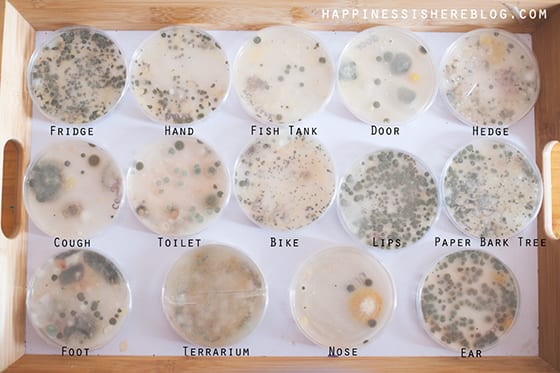
8. Grow bacteria from common surfaces
Difficulty: Medium / Materials: Medium
There’s never been a better time to learn about the way germs spread! Take samples from a variety of surfaces, then watch bacteria grow in petri dishes just like grown-up scientists.
Learn more: Growing Bacteria
9. Take friction for a ride
Difficulty: Medium / Materials: Medium
Your students will love pulling their way across the floor as they discover more about friction and its effects on motion. Build your own “sled” or use a premade box or tray.
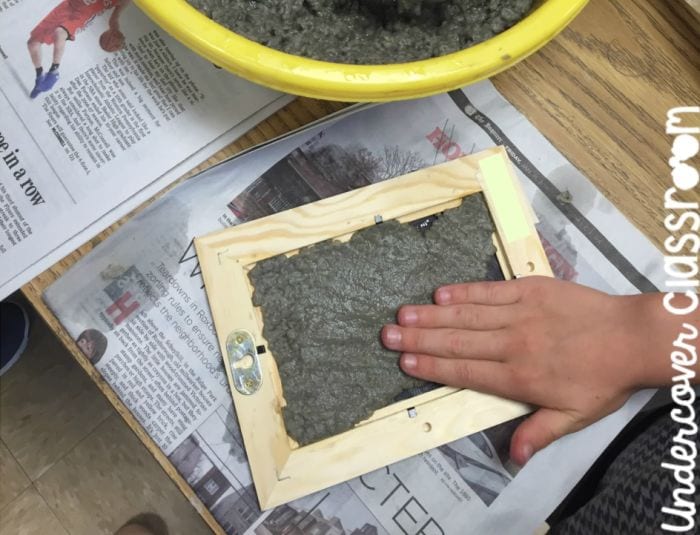
10. Go green with recycled paper
Difficulty: Medium / Materials: Medium
We talk a lot about recycling and sustainability these days, so show kids how it’s done! Recycle old worksheets or other papers using screens and picture frames.
Learn more: Recycled Paper
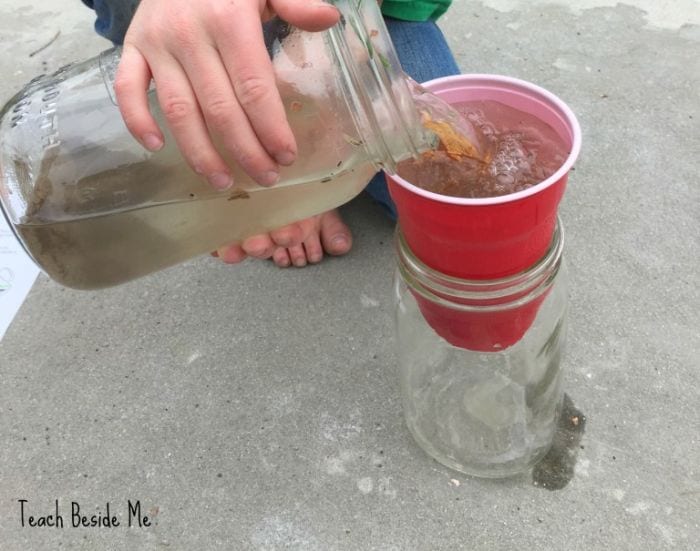
11. Filter sediment from dirty water
Difficulty: Easy / Materials: Basic
Explore sediments and water filtration with this easy 3rd grade science experiment. It’s a fun way to learn more about the water cycle.
Learn more: Water Filtration Experiment
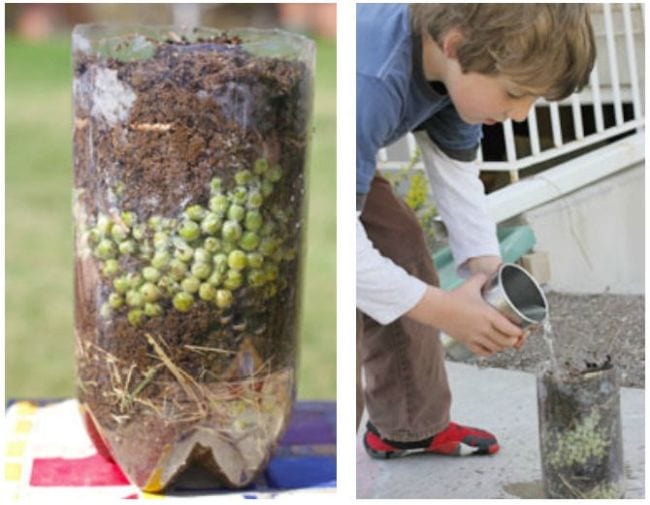
12. Put together a compost bottle
Difficulty: Easy / Materials: Basic
Learn about the decomposition of food and how composting can provide nutrients for growing more food with this easy earth science project.
Learn more: Soda Bottle Compost
13. Sprout new potatoes
Difficulty: Easy / Materials: Basic
Potatoes grow from tuberous roots, and under the right conditions, new shoots appear from those roots. This 3rd grade science experiment explores the biological science behind cloning.
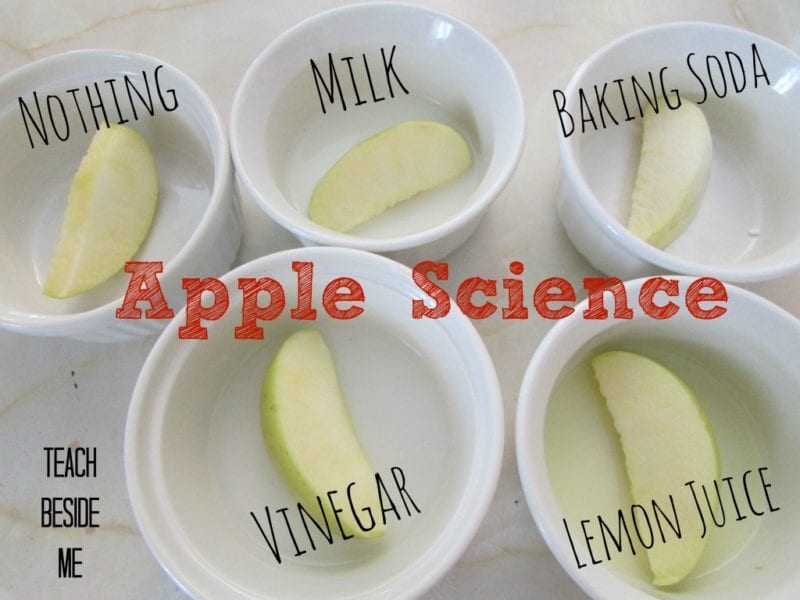
14. Keep apples from turning brown
Difficulty: Easy / Materials: Basic
What’s the best method to keep sliced apples from turning brown? Find out with this popular 3rd grade science project.
Learn more: Prevent Apple Browning
15. Fizz it up with antacid
Difficulty: Easy / Materials: Basic
Fizzy fantastic fun! Learn about chemical reactions by mixing water and effervescent antacid tablets to see what happens, comparing the time it takes for whole tablets and small pieces.
16. Drop objects to learn about gravity
Difficulty: Easy / Materials: Basic
Do heavier objects fall faster than lighter ones? Try this hands-on gravity activity for 3rd graders to find out!
3rd Grade STEM Challenge Projects
Use these STEM challenges as the basis for science fair project ideas, or try them as in-class science activities your 3rd graders will love!
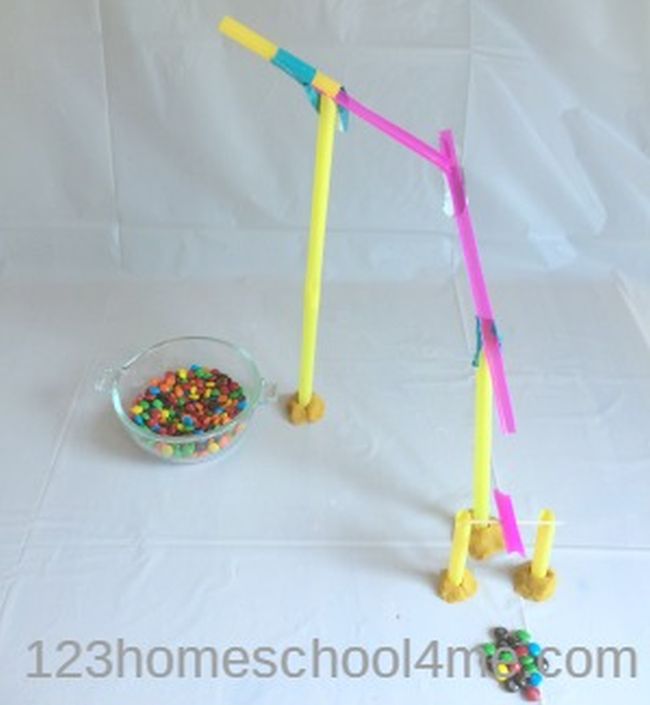
17. Design a candy-delivery machine
Difficulty: Easy / Materials: Basic
Learn about inclined planes with this fun simple-machines project. Kids can get creative and develop any kind of delivery system they like! Plus, 3rd grade science projects that end with a nice handful of candy can’t be beat!
Learn more: Candy Machine
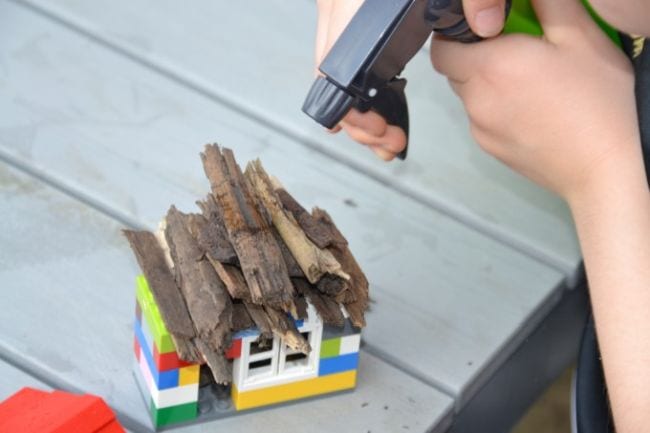
18. Determine the most waterproof roof
Difficulty: Easy / Materials: Basic
Calling all future engineers! Build a house from LEGO, then experiment to see what type of roof prevents water from leaking inside.
Learn more: Waterproof Roof STEM Challenge
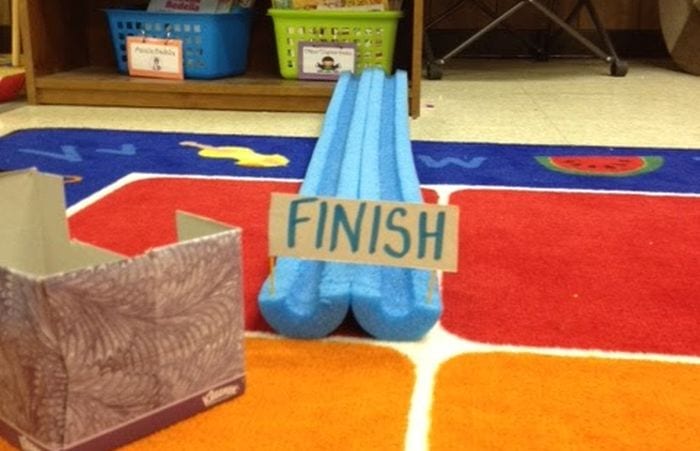
19. Run marble races with pool noodles
Difficulty: Easy / Materials: Medium
Crack open a pool noodle or two and create your own marble racetracks. Experiment with angles, force, and surface materials to find the fastest way to get the marble to the bottom. (Find more fun ways to use pool noodles in the classroom here.)
Learn more: Pool Noodle Marble Races
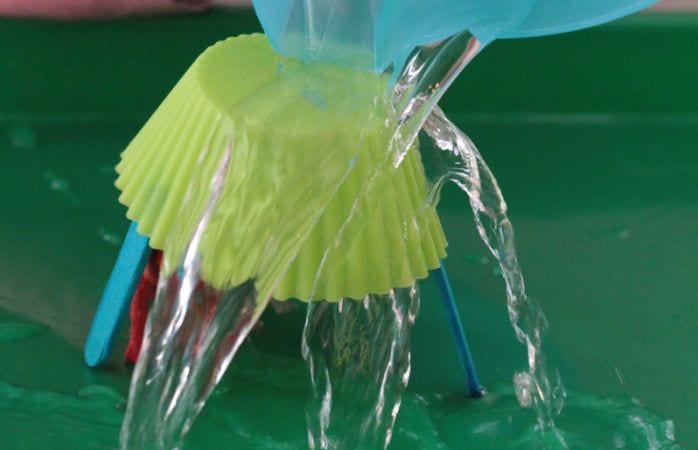
20. Build a better umbrella
Difficulty: Easy / Materials: Basic
Challenge students to engineer the best possible umbrella from various household supplies. Encourage them to plan, draw blueprints, and test their creations using the scientific method.
Learn more: Best Umbrella STEM Challenge
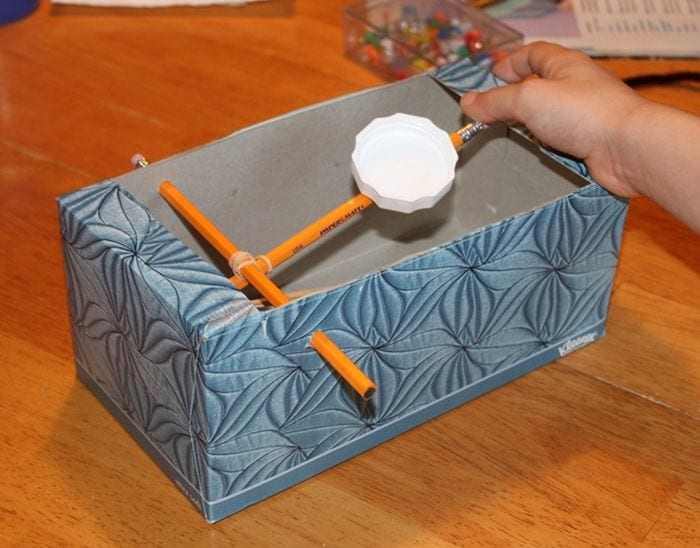
21. Construct a marshmallow catapult
Difficulty: Easy / Materials: Basic
Fling some sweet treats in the name of science! All you need is an old tissue box, pencils, rubber bands, and a few other supplies to learn about trajectory, air resistance, gravity, and more.
Learn more: Tissue Box Catapult
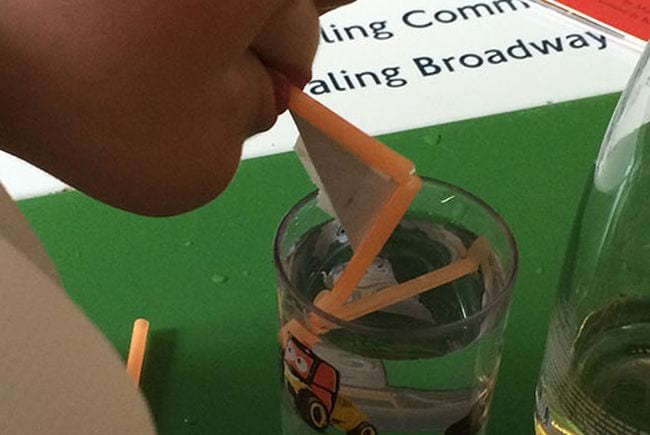
22. Blow through a water whistle
Difficulty: Easy / Materials: Basic
Learn about the science of sound with this easy experiment. Kids will love building their own whistles from straws and a glass of water.
Learn more: Water Whistle
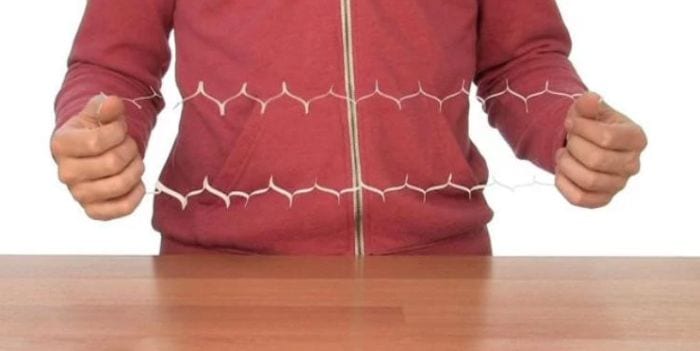
23. Step through an index card
Difficulty: Easy / Materials: Basic
With carefully placed scissor cuts on an index card, you can make a loop large enough to fit a (small) human body through! Kids will be wowed as they learn about surface area.
Learn more: Index Card Experiment
24. Construct a Hero’s engine
Difficulty: Medium / Materials: Basic
Sir Isaac Newton came up with rules about how things work in the world. One of these rules is called Newton’s third law. It says that “for every action, there is an equal and opposite reaction.” Do an experiment with your 3rd graders to learn more about this rule!
25. Model the effect of air drag
Difficulty: Easy / Materials: Basic
To learn about the role of drag in flight, students can fold paper planes in different styles and observe how these changes affect the distance and flight pattern of the planes. Turn this 3rd grade science project into a fun competition to see which plane flies the farthest or stays in the air the longest.
26. Put together an anemometer
Difficulty: Medium / Materials: Basic
This very simple weather instrument is easy enough for kids to build, allowing them to observe and think like a real meteorologist.
Magnet and Electricity Science Experiments for 3rd Grade
These shocking (OK, not literally!) electricity experiments will fit nicely into many 3rd grade science curriculum programs. Give them a try in the classroom, or encourage an interest in science at home.
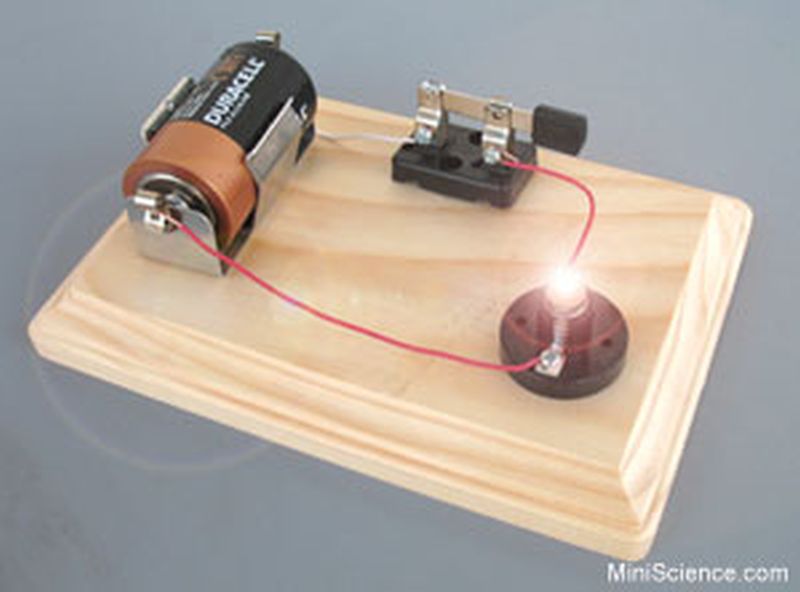
27. Assemble a simple circuit
Difficulty: Medium / Materials: Medium
To test the conductivity of different materials, your students can use a simple electric circuit. Invest in a few of these inexpensive gadgets to allow for all kinds of 3rd grade science projects.
Learn more: Simple Circuits
28. Turn a safety pin into a circuit
Difficulty: Medium / Materials: Medium
Looking for an even easier simple circuits project? This one requires only a few supplies you can grab at the hardware store and an ordinary everyday safety pin.
29. Investigate how liquids affect magnets
Difficulty: Easy / Materials: Medium
Are magnets equally effective in water? What about oil or a thicker liquid like, say, a milkshake? This would make for an easy 3rd grade science fair project that’s fun too.
30. Ask a magnet to dance
Difficulty: Easy / Materials: Basic
This is so cool! Make a magnet dance without touching it in this activity that’s part STEM challenge, part magnet experiment, and 100% amazing.
31. Capture lightning in a bottle
Difficulty: Medium / Materials: Medium
Well, it’s not quite that dramatic, but this cool electricity experiment for 3rd grade will still wow your students.
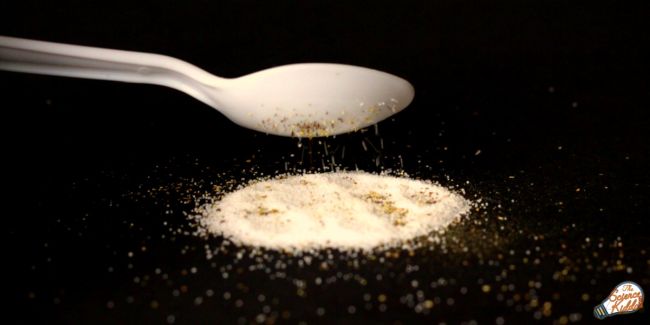
32. Separate salt and pepper with static electricity
Difficulty: Easy / Materials: Basic
When you mix up salt and pepper, you’d think it would be almost impossible to separate them again. But using a little static electricity and a plastic spoon, it’s surprisingly simple.
Learn more: Separate Salt and Pepper
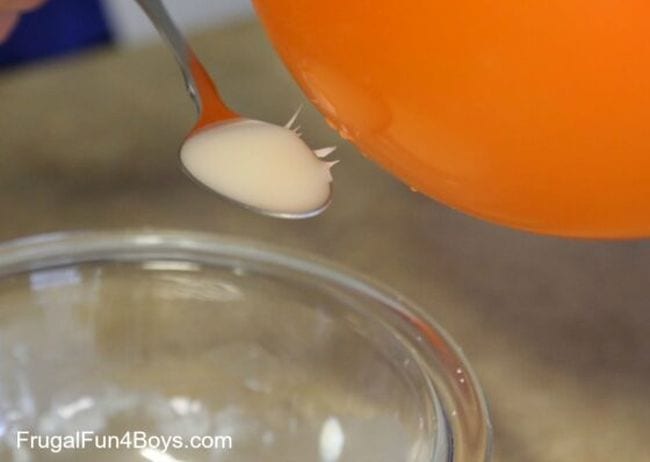
33. Explore static electricity with jumping goop
Difficulty: Easy / Materials: Basic
Your students have probably tried rubbing a balloon on their head to create static electricity with their hair. This experiment is even cooler to see, as a mix of cornstarch and oil seems to leap off the spoon in front of their eyes!
Learn more: Static Electricity Goop
34. Predict the distance of lightning
Difficulty: Easy / Materials: Basic
This weather science experiment never fails to impress. Use a stopwatch to measure the difference between the flash and the sound of lightning and thunder, then calculate the distance between you and the strike.
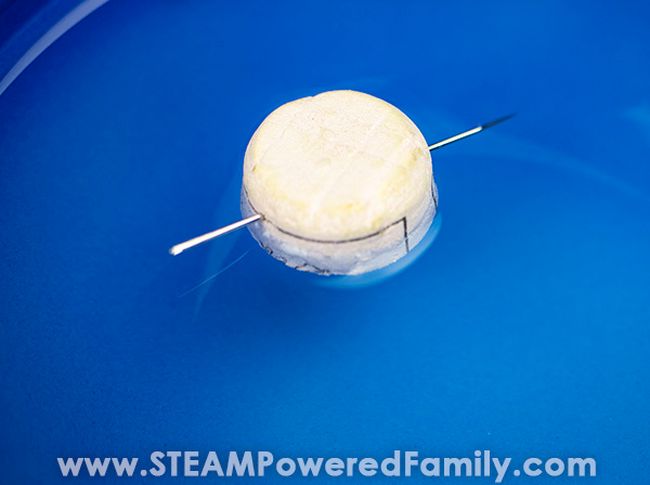
35. Find your way with a DIY compass
Difficulty: Easy / Materials: Basic
Here’s an old classic that never fails to impress. Magnetize a needle and float it on the water’s surface—it will always point north.
Learn more: DIY Compass
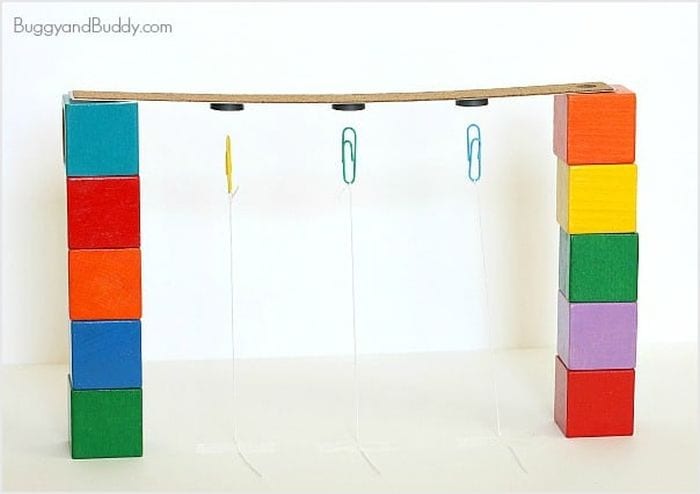
36. Defy gravity with magnets and paper clips
Difficulty: Easy / Materials: Medium
Magnets are always a hit in the classroom. Use this simple experiment to discover more about gravity and the effects of magnets on metal objects.
Learn more: Gravity Activity With Paper Clips
More 3rd Grade Science Projects and Activities
These science experiments for 3rd graders explore all sorts of concepts, from the laws of motion to earth and planetary science and beyond.
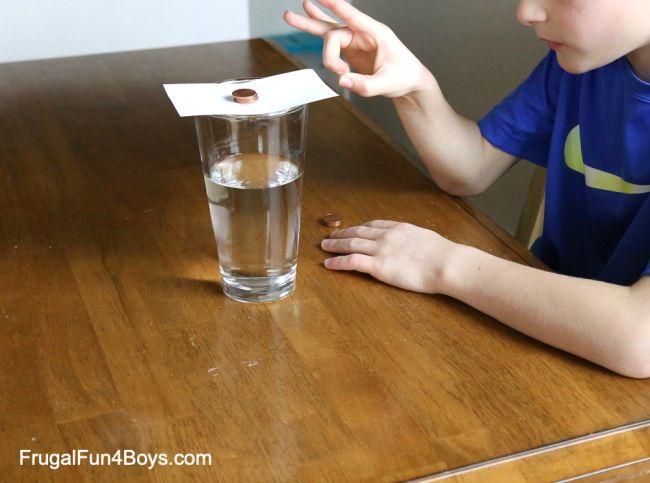
37. Flick pennies to learn about inertia
Difficulty: Easy / Materials: Basic
This is one of those science experiments that kind of looks like magic, but it’s really all about the laws of motion. It might take a little practice to get the index card flick just right, but the results are always cool!
Learn more: Inertia Science With Pennies
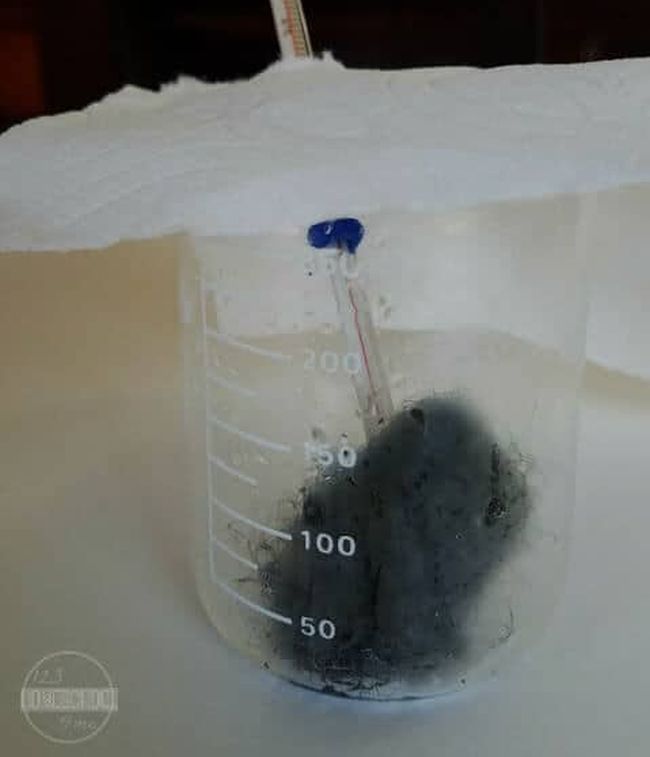
38. See the temperature rise in a chemical reaction
Difficulty: Easy / Materials: Basic
When iron meets oxygen, rust forms. Use vinegar to remove the protective coat from steel wool and watch the temperature rise from the chemical reaction.
Learn more: Simple Chemical Reaction Experiment
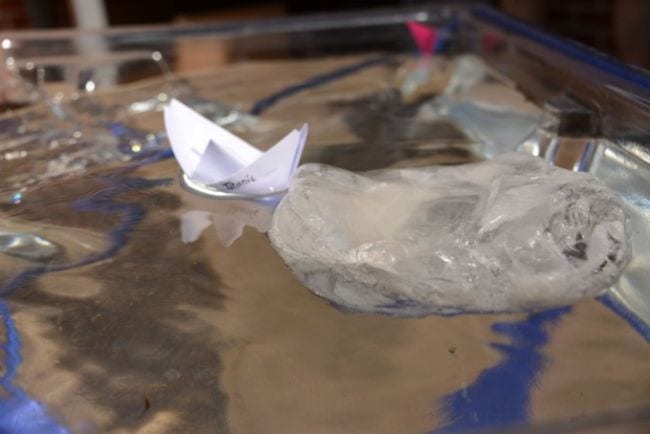
39. Float an iceberg
Difficulty: Easy / Materials: Basic
Use a balloon to make an iceberg, then float it in a dish of water to learn how much you can see above and below the waterline. Try experimenting with salt water to see how the density changes things.
Learn more: Make an Iceberg
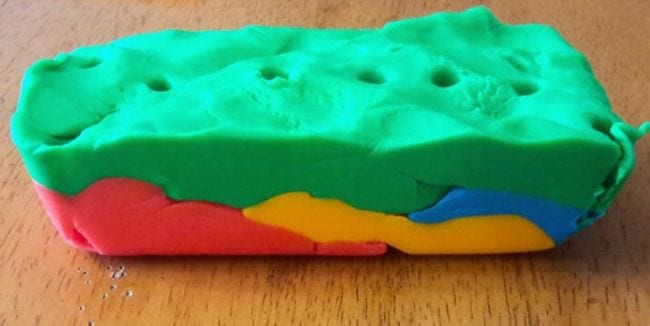
40. Take a Play-Doh core sample
Difficulty: Easy / Materials: Basic
Learn about the layers of the Earth by building them out of Play-Doh. Then students can take a core sample with a straw. (Love Play-Doh? Get more learning ideas here.)
Learn more: Core Sampling
41. Spin a disappearing color wheel
Difficulty: Easy / Materials: Basic
Color a paper disk with the six primary and secondary colors. Then thread a string through the middle and make it spin. The colors will seem to disappear!
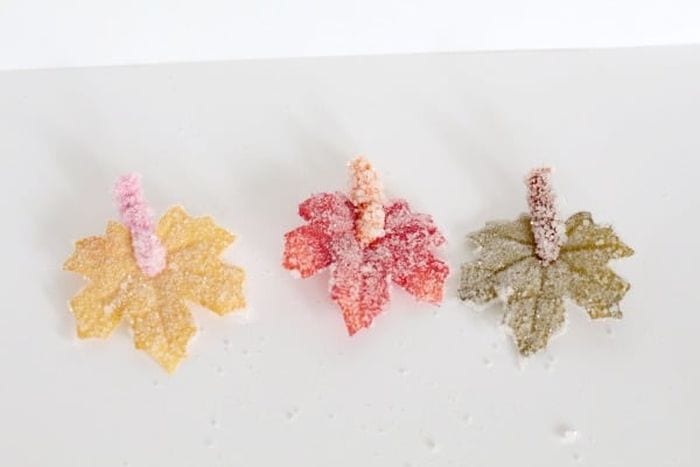
42. Crystallize some pretty fall leaves
Difficulty: Easy / Materials: Medium
Every kid loves making crystals. In this 3rd grade science project, learn about supersaturated solutions by crystallizing some colorful fall leaves. Then use them as fall classroom decor!
Learn more: Salt Crystal Leaves
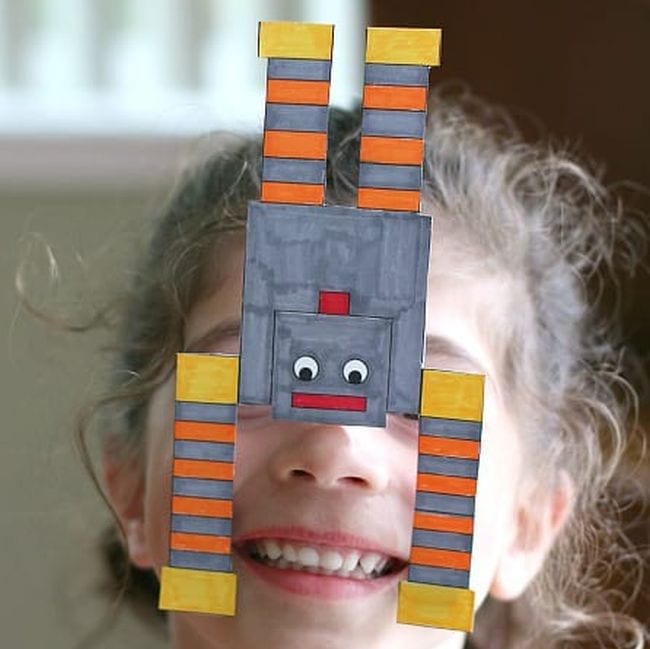
43. Find a robot’s center of gravity
Difficulty: Easy / Materials: Basic
Print out, cut, and color this free paper robot. Then glue some coins to the back and have your students try to find its center of gravity.
Learn more: Balancing Robot
44. Make your own bouncing bubbles
Difficulty: Easy / Materials: Basic
Have your 3rd grade science students put on gloves and watch the bubbles bounce! Then encourage them to experiment with their own bubble solution. Try different soaps, mixing up the ratios to make the strongest bubble possible.
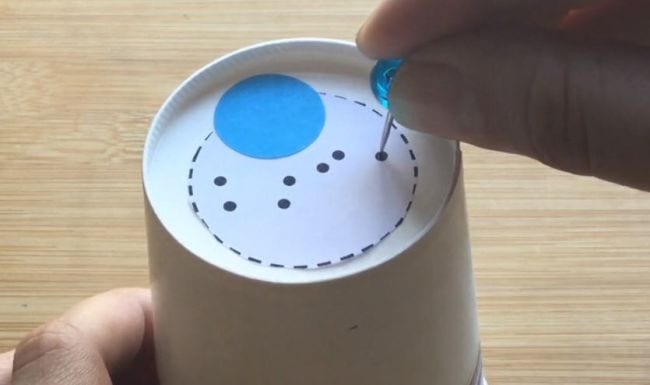
45. Project the stars on your ceiling
Difficulty: Easy / Materials: Basic
Use the video lesson in the link below to teach 3rd grade science students why stars are only visible at night. Then create a DIY star projector to explore the concept hands-on.
Learn more: Star Projector
46. Blow bubbles inside bubbles inside bubbles
Difficulty: Medium / Materials: Basic
If there’s a more fun 3rd grade science project about surface tension than bubbles, we haven’t found it yet! Create a soap solution by using dissolved sugar and discover more about elasticity and volume as you blow bubbles inside bubbles inside bubbles …
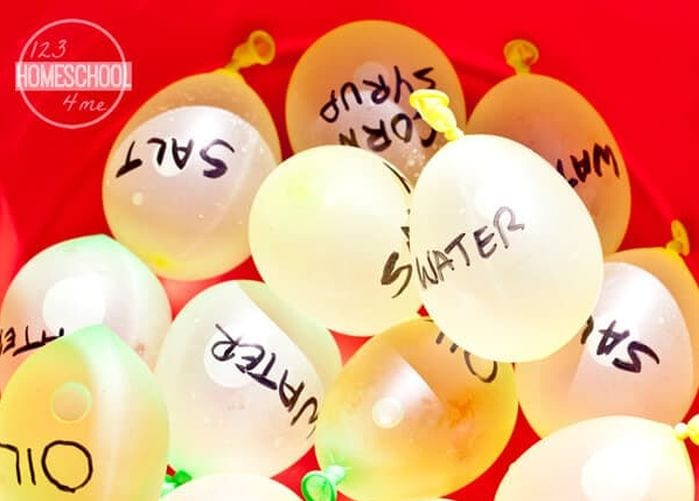
47. Use water balloons to explore buoyancy
Difficulty: Easy / Materials: Basic
Fill water balloons with different solutions (oil, salt water, fresh water, etc.) and place the balloons in a large bucket of water to see if they sink or float. This is a cool project to do with your 3rd grade science class on the playground on a sunny day.
Learn more: Balloon Density
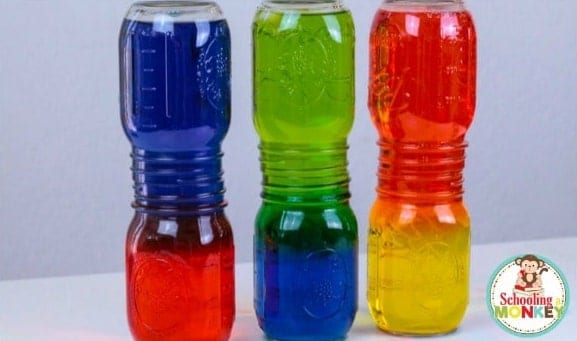
48. Learn how water temperature affects density
Difficulty: Easy / Materials: Basic
Looking for a simple, quick, and colorful science experiment? This one just requires some mason jars, hot and cold water, and food coloring. Kids will be amazed at the results!
Learn more: Water Density Experiment
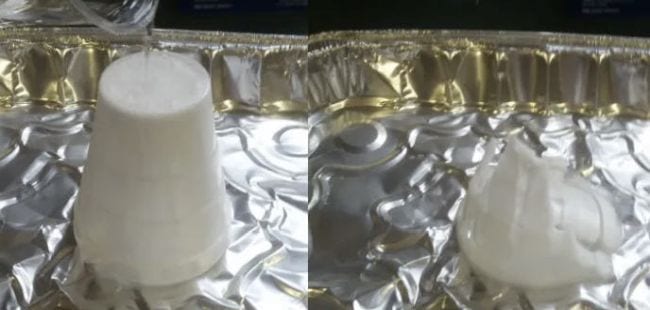
49. Dissolve cups to learn about types of change
Difficulty: Easy / Materials: Basic
Teach your 3rd grade science class about the differences between physical and chemical changes with this quick and easy experiment involving Styrofoam cups.
Learn more: Dissolving Cups
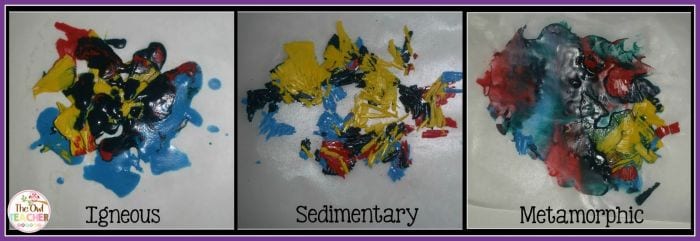
50. Turn crayons into rocks
Difficulty: Easy / Materials: Basic
Demonstrate the effects of heat and pressure on crayon shavings to explain the different types of rocks to students. It’s a colorful intro to geology!
Learn more: Crayon Rocks
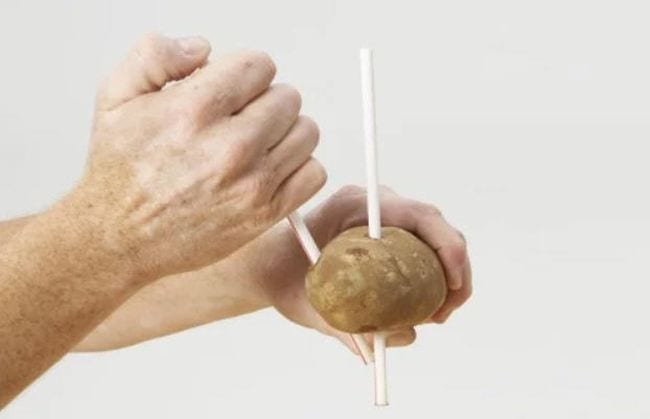
51. Stab a straw through a potato
Difficulty: Easy / Materials: Basic
Plastic straws may seem flimsy, but by using the power of air pressure, you can make one strong enough to stab all the way through a potato!
Learn more: Straw Potato
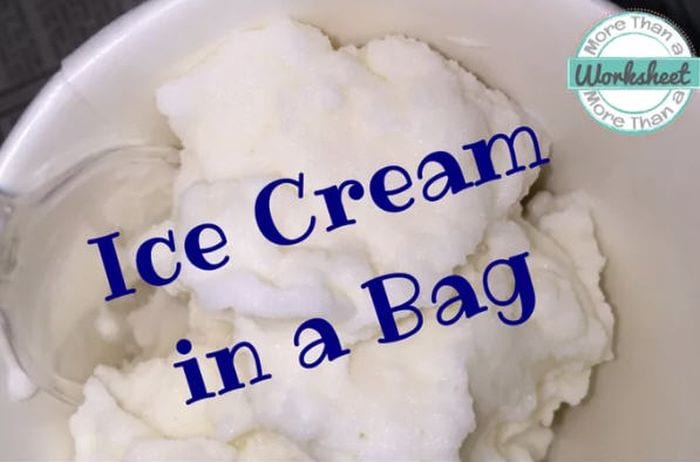
52. Shake up some ice cream
Difficulty: Easy / Materials: Basic
Get kids up and moving when they shake their way to ice cream, made from scratch using ice and plastic zipper bags! Talk about heating and cooling as well as condensation while you enjoy your snack.
Learn more: Make Ice Cream in a Bag
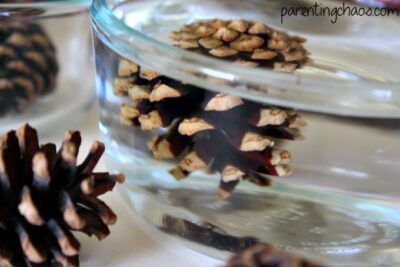
53. Watch pine cones open and close
Difficulty: Easy / Materials: Basic
Pine cones can sense changes in humidity and adjust their scales in response. Gather several pine cones, glass containers, tweezers, and both hot and cold water to conduct a fun experiment to discover what makes pine cones open and close.
Learn more: Pine Cone Experiment
54. Make butter slime
Difficulty Easy / Materials: Basic
While this slime recipe doesn’t use actual butter, the end consistency is just plain awesome! Have fun getting creative with colors.
55. Create a solar oven
Difficulty Easy / Materials: Basic
Learn about solar radiation while making a tasty treat. Aside from the ingredients to make s’mores, all you need is some tinfoil, plastic wrap, and a beautiful sunny day.
56. Mix up some chalk paint
Difficulty Medium / Materials: Medium
You might think you’re baking at first since you’ll need water, cornstarch, food coloring, a measuring bowl, and a muffin tin. Really though, you’ll be making sidewalk paint chalk! Grab some foam brushes and head outside on a nice day to experiment with it.
57. Poke pencils through water
Difficulty: Easy / Materials: Basic
Want to show your students how polymers work while amazing them in the process? Then this is the perfect simple experiment for you. All you’ll need is a bag, some water, and some pencils.
58. Have a blast with Mentos and coke
Difficulty: Easy / Materials: Basic
Before getting started, have your students create funnels from card stock. Once you’re ready to try the experiment, you’ll want to head outside because things might get messy. Drop the Mentos into the top of a coke bottle using the funnel and then watch the explosion!
59. Whip up some elephant toothpaste
Difficulty: Medium / Materials: Medium
This is an experiment you’ll want to perform yourself for the kids to watch. It’s a great way to teach the kids about exothermic reactions. Kids will be amazed at the super-sized reaction.
60. Erupt some fun
Difficulty: Medium / Materials: Medium
You’ll need baking soda, vinegar, dish soap, and food coloring as well as some type of plastic volcano form. This classic science experiment serves as an example of an acid-base reaction. Add in some plastic dinosaurs to really liven up the scene!
61. Mix an egg with some vinegar
Difficulty: Easy / Materials: Basic
This is a great way to safely demonstrate a chemical reaction. Simply have students drop an egg in a cup of vinegar and then wait a few days to see the progression. They’ll be amazed by the egg’s transformation into a bouncy ball of sorts!
62. Make giant bubbles
Difficulty: Medium / Materials: Basic
This is another bubble project. Kids will get a kick out of seeing the larger-than-life bubbles their new wand can create. Be sure to assist with the hot-glue gun so little hands don’t get burned.
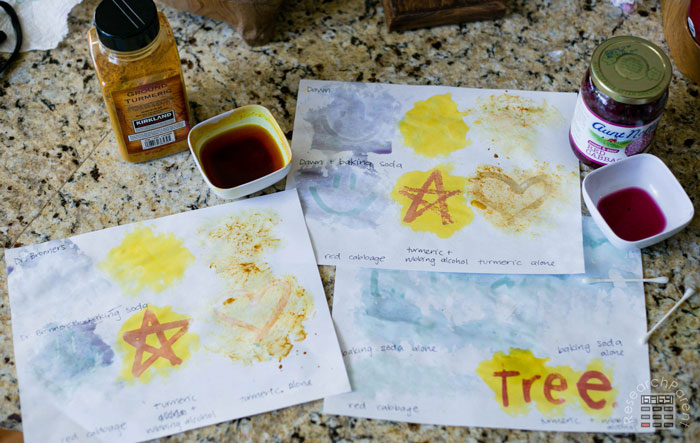
63. Decode messages
Difficulty: Medium / Materials: Medium
Kids will definitely enjoy getting to play detective. This one requires a few more supplies than some of the others on our list.
Learn more: Color-Changing Invisible Ink
64. Make a lemon volcano
Difficulty: Easy / Materials: Basic
This is another variation on the classic volcano science experiment. We especially love how minimal the materials are for this one. Grab some lemons, food coloring, and baking soda and you’re good to go!
65. Make popcorn dance
Difficulty: Easy / Materials: Basic
A little baking soda, vinegar, and popcorn are perfect for a lesson on density and acid-base reactions. We love 3rd grade science projects like this one that the kids can do themselves with little assistance.
66. Make a lava lamp
Difficulty: Medium / Materials: Medium
If you’re a child of the 1970s, you’ll especially love this science experiment, and your 3rd graders will get a lesson on density, polarity, and acidity while making their very own lava lamp. Create it in a bottle with a lid and they can even take it home with them.
67. Make a robotic hand
Difficulty: Medium / Materials: Medium
We love 3rd grade science projects that double as a math lesson. Learn about anatomy while also brushing up on your measuring skills. Your students will be excited to bring this one home to show off.
68. Grow an avocado tree
Difficulty: Medium / Materials: Medium
This is a great botany lesson that the class can participate in from the beginning with a single avocado to growing a whole tree. You can even try growing more than one under different variables and see which is more successful.
69. Extinguish a flame
Difficulty: Easy / Materials: Basic
This experiment is a simple way to demonstrate that fire, like many things, needs oxygen to sustain itself. Have an adult light the flame and then let the students gather around as you extinguish it slowly with just a glass.
70. Experiment with atmospheric pressure
Difficulty: Easy / Materials: Basic
This one is similar to the previous experiment but with a twist. Students will be amazed at what happens to the surrounding water once the flame uses up the oxygen in the cup.
71. Float an egg
Difficulty: Easy / Materials: Basic
Some of the best 3rd grade science projects require minimal materials and process to demonstrate a big lesson. This one is a simple way to teach young students about density. Demonstrate how an egg sinks in a cup of regular water but floats in a cup of salt water. Then, explain that the salt water is denser than fresh water. Since the egg is less dense than the salt water, it floats!
72. Dazzle with a toothpick star
Difficulty: Easy / Materials: Basic
This one will even amaze your coworkers. Break apart toothpicks and lay them out in the shape of a closed star. Introduce water into the center and watch as they expand into a star shape. It’s a very cool way to teach about capillary action.
73. Make a flyer
Difficulty: Easy / Materials: Basic
Since kids love paper airplanes, this STEM project is sure to be a hit. All you’ll need is some paper, straws, tape, and scissors.
74. Explode a snowman
Difficulty: Easy / Materials: Basic
Before getting started, have students draw a face for their snowman on ziplock bags. Then have them mix baking soda (a base) with vinegar (an acid). This experiment is a great way to teach kids about chemical reactions and how a substance can transform into another substance under the right circumstances.
75. Use raisins to test density
Difficulty: Easy / Materials: Basic
It doesn’t get much easier than this experiment! You’ll need a cup of regular water, a cup of sparkling water, and some raisins. So few materials teach a big lesson on buoyancy and density.
